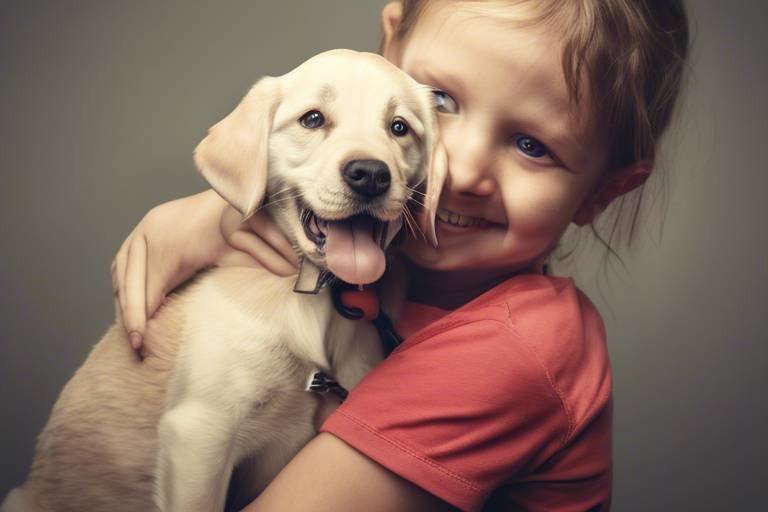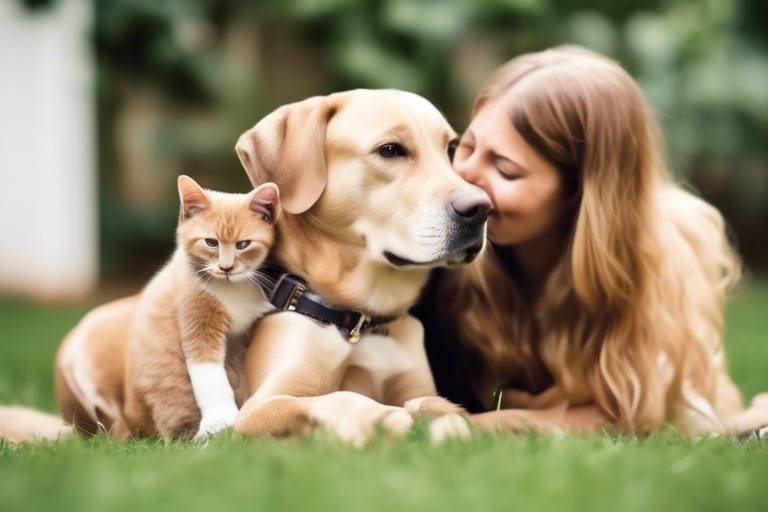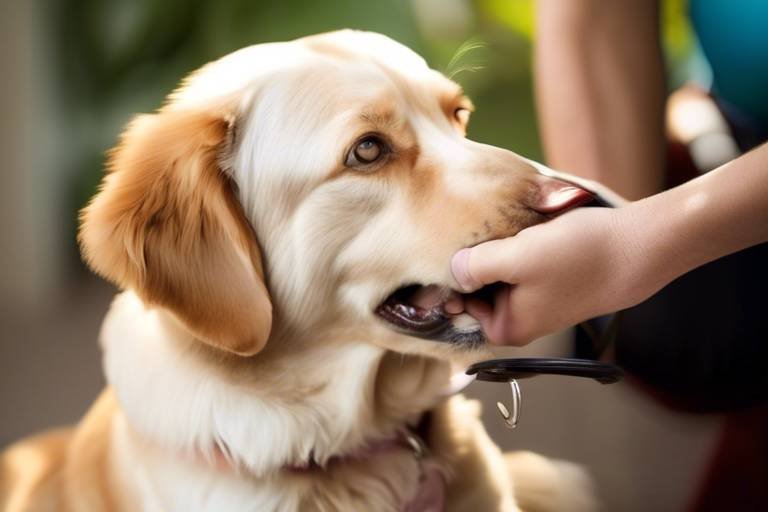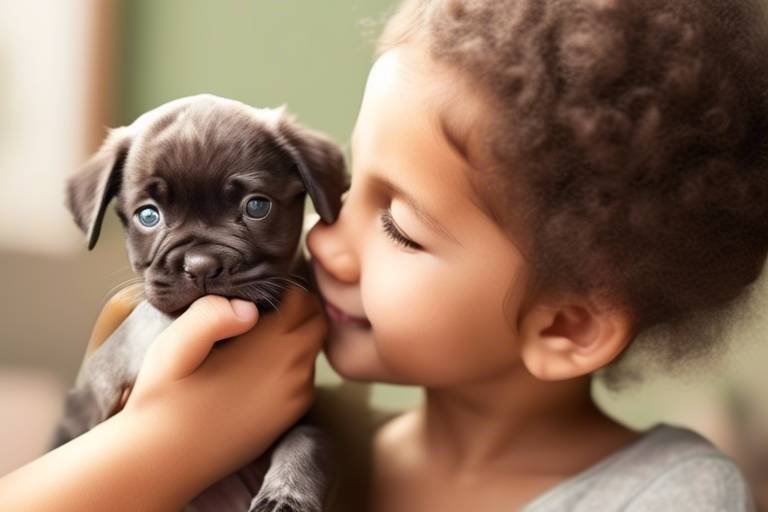How to Create a Successful Pet Adoption Program
Creating a successful pet adoption program is not just about finding homes for animals; it's about building a community that values and cares for its furry residents. Imagine a world where every wagging tail and gentle purr has a loving family to call their own. This dream can become a reality through dedicated efforts and strategic planning. In this article, we’ll explore essential strategies and best practices that can help you establish an effective pet adoption program. By focusing on community engagement and responsible pet ownership, we can ensure that animals find loving homes while enriching the lives of their new families.
Recognizing the importance of pet adoption is the first step in crafting a program that truly addresses community needs. Every year, millions of animals find themselves in shelters, often due to circumstances beyond their control. By promoting pet adoption, we not only reduce the number of homeless animals but also advocate for responsible pet ownership. This means educating potential adopters about the commitment involved in bringing a pet into their lives. Think of it like this: adopting a pet is like bringing a new family member home. It’s a lifelong commitment filled with joy, challenges, and unconditional love.
Collaboration is key to creating a robust pet adoption program. By partnering with local shelters, veterinary clinics, and community groups, you can enhance resources and outreach. These partnerships can create a support system that benefits both the animals and the community. For instance, veterinary clinics can offer discounted services for adopted pets, while shelters can provide information about available animals. Imagine the impact of a united front, where everyone works together for the common goal of animal welfare. This not only increases visibility for your program but also fosters a sense of community ownership over the initiative.
An effective marketing strategy is vital for attracting potential adopters. In today’s digital age, utilizing social media platforms can significantly boost awareness and interest in your adoption program. Consider creating engaging content that showcases the personalities of the animals available for adoption. Use heartwarming photos and videos that tell their stories. Additionally, local events such as adoption fairs or educational workshops can draw in families. Think of your marketing strategy as a bridge connecting animals in need with loving homes. The more creative and engaging you are, the more likely you are to inspire people to adopt.
A clear and efficient adoption process is essential for ensuring that potential pet owners are well-informed and prepared for their new responsibilities. This process should include an application, an interview, and a home visit, if necessary. It’s like preparing for a big test; you want to make sure you have all the right information before diving in. By guiding potential adopters through each step, you not only streamline operations but also increase the likelihood of successful placements. Remember, it's not just about finding homes, but finding the right homes.
Once a pet is adopted, the journey doesn’t end there. Providing resources such as training, behavioral guidance, and post-adoption support can make a significant difference in the success of the adoption. Think of it as giving new pet owners a toolbox filled with everything they need to succeed. This support fosters a positive experience for new pet owners, encouraging successful transitions and reducing the likelihood of returns. After all, the goal is to create lasting bonds between pets and their families.
A foster care program is a wonderful way to give animals a nurturing environment while they await adoption. It helps socialize them and makes them more appealing to potential adopters. Imagine a shy dog blossoming in a loving home, learning to trust again. By placing animals in foster care, you not only improve their chances of adoption but also create a network of passionate advocates who can share their experiences with others. This can lead to increased interest and ultimately, more successful adoptions.
Regular evaluation of adoption outcomes is crucial for understanding the program's effectiveness. By tracking metrics such as adoption rates and return rates, you can identify areas for improvement. It’s like checking the health of a garden; you need to know what’s thriving and what needs more attention. Ensuring that both pets and adopters are thriving in their new relationships is the ultimate goal. This continuous feedback loop allows for adjustments to be made, ensuring the program remains effective and responsive to community needs.
Hosting community events such as adoption fairs, educational workshops, and fundraising activities not only raises awareness but also fosters a sense of community involvement. These events can be a fantastic way to bring people together and create a buzz around pet adoption. Picture a bustling fair filled with families, laughter, and of course, adorable pets looking for their forever homes. Engaging the community in this way strengthens the bond between residents and their local animal welfare efforts.
Sharing success stories of adopted pets and their new families creates a positive narrative around the program. These heartwarming tales can inspire others to consider adoption and reinforce the impact of the initiative on the community. Think of it as a ripple effect; one happy adoption can lead to many more. By highlighting these stories through newsletters, social media, or community boards, you not only celebrate the achievements of your program but also motivate others to get involved.
Q: How can I get involved in a pet adoption program?
A: There are many ways to get involved! You can volunteer at local shelters, foster pets, or help with community events. Every little bit helps!
Q: What should I consider before adopting a pet?
A: Think about your lifestyle, living situation, and the time you can dedicate to a pet. It’s important to choose an animal that fits well with your home.
Q: What happens if I can no longer care for my adopted pet?
A: If you find yourself unable to care for your pet, reach out to the adoption program or shelter. They can help you find a solution that works for both you and your pet.

Understanding the Need for Pet Adoption
Pet adoption is more than just giving an animal a home; it's about addressing a significant issue that affects communities worldwide. Every year, millions of animals end up in shelters due to various reasons such as abandonment, neglect, or unforeseen circumstances in their owners' lives. Understanding the need for pet adoption is crucial because it not only helps reduce the number of homeless animals but also promotes responsible pet ownership and enhances overall animal welfare.
When we talk about pet adoption, we must consider the emotional and social benefits that come with it. Adopting a pet can lead to a fulfilling companionship that enriches our lives. Pets provide unconditional love, reduce stress, and even encourage a more active lifestyle. However, the responsibility that comes with pet ownership is equally important. It's essential to ensure that potential adopters are aware of the commitment involved, which includes time, resources, and emotional investment.
Moreover, pet adoption programs play a vital role in educating the community about the importance of spaying and neutering pets. This practice not only helps control the pet population but also minimizes the risk of health issues in animals. A well-structured adoption program can serve as a platform to raise awareness about responsible breeding practices and the benefits of adopting rather than buying pets.
In many cases, the plight of homeless animals can be overwhelming. According to the American Society for the Prevention of Cruelty to Animals (ASPCA), approximately 3.3 million dogs and 3.2 million cats enter U.S. shelters every year. This staggering number highlights the urgency of effective pet adoption programs. By fostering a culture of adoption, we can help alleviate the burden on shelters and ensure that more animals find their forever homes.
To truly understand the need for pet adoption, let's look at some key statistics:
| Statistic | Number |
|---|---|
| Animals entering shelters annually | 6.5 million |
| Dogs adopted from shelters | Approximately 1.6 million |
| Cats adopted from shelters | Approximately 1.6 million |
| Animals euthanized in shelters | Approximately 1.5 million |
These figures illustrate the critical need for effective pet adoption programs. They remind us that every effort counts in making a difference in the lives of these animals. By understanding the need for pet adoption, we can better tailor our programs to meet community needs, ensuring that every animal has a chance to find a loving home.
In conclusion, recognizing the importance of pet adoption not only addresses the immediate need to reduce the number of homeless animals but also promotes a culture of compassion and responsibility within our communities. By fostering awareness and encouraging responsible pet ownership, we can create a brighter future for both pets and their potential owners.
- Why should I adopt instead of buying a pet? Adopting helps save lives and reduces the number of homeless animals. Additionally, shelter pets often come vaccinated and spayed/neutered.
- What is the process of adopting a pet? The process typically involves filling out an application, meeting the animal, and sometimes a home visit to ensure a good match.
- Are there any costs associated with pet adoption? Yes, adoption fees usually cover vaccinations, spaying/neutering, and sometimes other medical care.

Building Partnerships with Local Organizations
When it comes to creating a successful pet adoption program, one of the most powerful strategies is to build partnerships with local organizations. Why? Because collaboration can amplify your efforts and resources, making your program not just good, but truly great! Imagine trying to fill a bucket with a tiny spoon; now imagine having a whole team of people with buckets of their own. That's the difference a partnership can make!
By teaming up with local shelters, veterinary clinics, and community groups, you can create a robust support system that enhances your outreach and visibility. For example, a local veterinary clinic can offer discounted check-ups for newly adopted pets, which not only helps the new pet owners but also fosters trust and goodwill within the community. Similarly, shelters can provide valuable insights into the types of pets that are most in need of homes, allowing your program to focus its efforts where they are most needed.
Moreover, consider hosting joint events. These can range from adoption fairs to educational workshops about responsible pet ownership. Such events not only spread the word about your program but also encourage community involvement. When people see multiple organizations coming together for a common cause, it creates a sense of unity and shared purpose. This can be particularly effective in raising awareness about the importance of pet adoption and animal welfare.
Here’s a quick look at some potential partners and how they can contribute:
| Organization Type | Potential Contributions |
|---|---|
| Animal Shelters | Provide animals for adoption, share success stories, and assist with outreach. |
| Veterinary Clinics | Offer discounted services for adopted pets, provide health checks, and educate adopters. |
| Community Groups | Help organize events, spread the word through local networks, and engage volunteers. |
In addition, don't underestimate the power of social media in these partnerships. Collaborating with local influencers or pet enthusiasts can help amplify your message to a wider audience. Imagine your adoption program being featured by a popular local blogger who shares their own pet adoption story—talk about a game changer!
Finally, always remember to nurture these partnerships. Regular communication, expressing gratitude, and recognizing contributions can go a long way in maintaining strong relationships. Just like any relationship, it requires effort and dedication to flourish. So, roll up those sleeves, reach out, and start building those partnerships—your future furry friends are counting on you!
- Why are partnerships important for pet adoption programs?
Partnerships enhance resources, increase visibility, and create a supportive network that can help both animals and adopters. - What types of organizations should I consider partnering with?
Local shelters, veterinary clinics, pet supply stores, and community groups are all great options. - How can I effectively reach out to potential partners?
Start by outlining mutual benefits, and propose ideas for collaboration, such as joint events or shared marketing efforts.
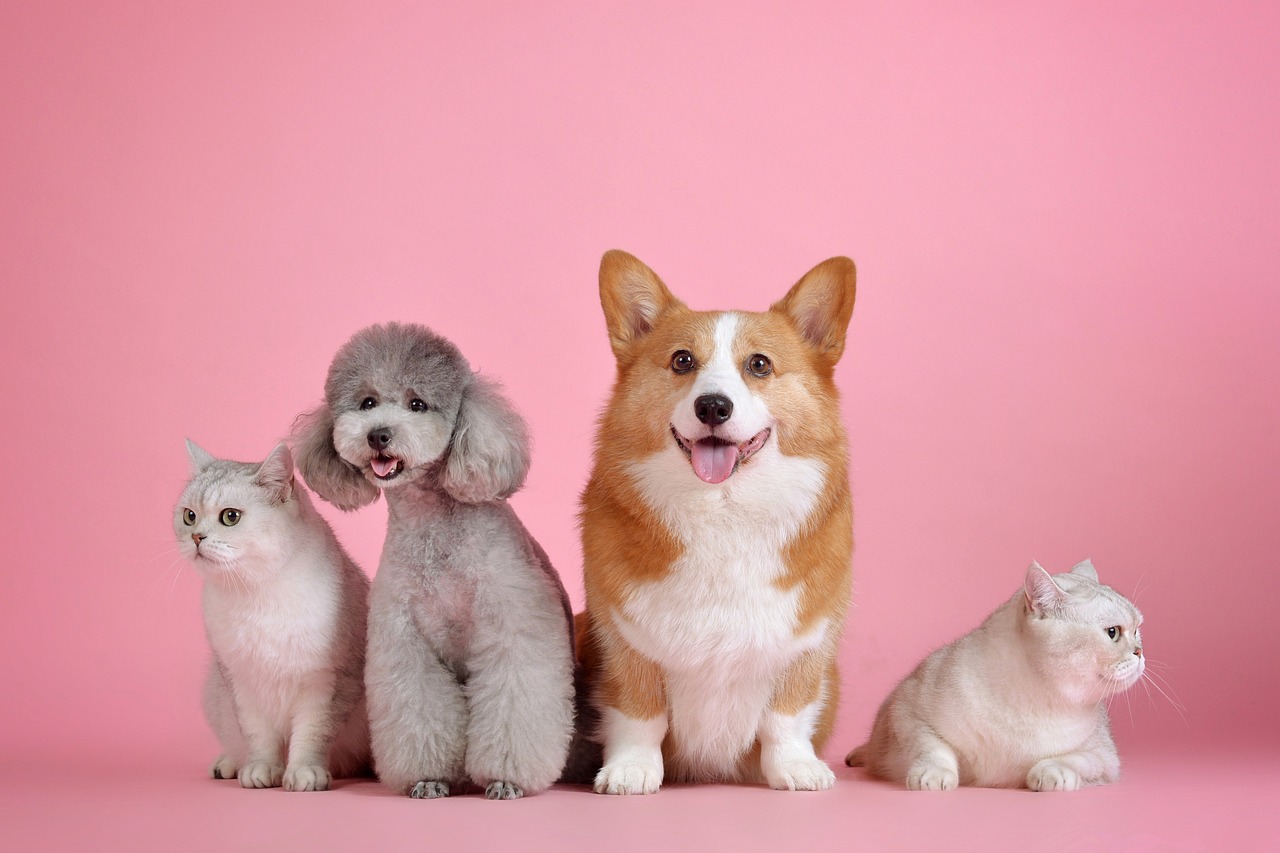
Creating an Engaging Marketing Strategy
In the world of pet adoption, having a dynamic marketing strategy is not just a luxury; it’s a necessity. Imagine standing in a room filled with eager potential adopters, each looking for that perfect furry companion, yet they remain unaware of the wonderful pets you have waiting for them. This is where a well-crafted marketing plan comes into play, acting as the bridge that connects these individuals to their future pets. To kick things off, harness the power of social media. Platforms like Facebook, Instagram, and Twitter are not just for sharing cute cat videos; they are powerful tools for spreading the word about your adoption program. Regular posts featuring adorable photos of pets available for adoption, along with heartwarming stories, can significantly boost engagement and interest.
Next, consider hosting local events. These can range from adoption fairs in parks to community outreach programs in schools. By bringing the community together, you create an opportunity for people to meet the animals in person, which can be a game-changer. When potential adopters can interact with the pets, they are more likely to form an emotional connection that leads to adoption. Additionally, collaborating with local businesses for sponsorship can enhance your event's visibility and create a sense of community ownership over the initiative.
Don’t overlook the importance of informative materials. Create brochures, flyers, and posters that not only showcase available pets but also educate the public about the benefits of pet adoption. These materials should be visually appealing and easy to understand, highlighting key points such as the responsibilities of pet ownership, the joys of adopting, and how your program works. Consider incorporating a FAQ section in your materials to address common concerns and questions that potential adopters might have, making them feel more informed and prepared.
Furthermore, leverage the power of storytelling. Share success stories of pets that have found their forever homes. These narratives not only inspire but also demonstrate the positive impact of your program on both animals and the community. You could even create a dedicated section on your website or social media pages to feature these stories, making it a go-to spot for inspiration and encouragement for potential adopters.
Lastly, keep your marketing efforts consistent and engaging. Use a mix of content types—videos, testimonials, and live Q&A sessions—to keep your audience interested. Regularly assess the effectiveness of your strategies by monitoring engagement metrics and adjusting your approach as needed. Remember, the goal is to create a vibrant community around pet adoption, where people feel excited to participate and share in the joy of bringing a new pet into their lives.
| Question | Answer |
|---|---|
| How can I help promote the adoption program? | You can share posts on social media, volunteer at events, and talk to friends and family about the benefits of adopting pets. |
| What types of pets are available for adoption? | Our program features a variety of pets, including dogs, cats, rabbits, and sometimes even exotic animals. |
| How can I prepare for adopting a pet? | Research the specific needs of the pet you’re interested in, prepare your home, and ensure you have the necessary supplies ready. |

Developing a Comprehensive Adoption Process
When it comes to pet adoption, having a comprehensive adoption process is absolutely crucial. Think of it as the roadmap that guides both the shelter and the potential adopters through the journey of finding a new furry family member. A well-structured process not only enhances the experience for everyone involved but also ensures that pets find their forever homes with responsible owners. So, how do we create this roadmap? Let's break it down.
First and foremost, it’s essential to establish clear criteria for adoption. This means outlining what potential adopters need to know and do before they can take a pet home. For example, consider factors such as age, living situation, and prior pet ownership experience. By setting these standards, you can help ensure that the animals go to homes that are prepared for their needs. But remember, flexibility is key! Not every loving home fits into a mold, so it’s important to evaluate each application on a case-by-case basis.
Next, an effective adoption application form is vital. This form should gather necessary information about the adopter's lifestyle, preferences, and experience with pets. It’s a bit like a first date; you want to know if you’re compatible before making a commitment! Include questions that help gauge the applicant's understanding of pet care and their readiness to take on the responsibility. But don’t make it so daunting that potential adopters feel overwhelmed. Keep it concise yet informative.
Once the applications are in, the next step is conducting interviews and home visits. This is where the magic happens! Engaging with potential adopters allows you to assess their suitability and answer any questions they may have. Plus, home visits can provide insight into the environment the pet would be living in. Just imagine how reassuring it is for everyone involved to know that the new home is safe and welcoming!
After the interviews and visits, it's time for the fun part: matching pets with their new families! This is where your knowledge about the animals in your care comes into play. You want to ensure that the personalities of the pets align with those of the adopters. For instance, an energetic dog might not be the best fit for a quiet household. By making thoughtful matches, you increase the chances of successful adoptions.
Finally, once the adoption is approved, the process should include a thorough orientation session for the new pet owners. This is crucial! Provide them with all the necessary information regarding the pet's behavior, health, and care requirements. You might even consider offering a welcome kit that includes essentials like food, toys, and a list of local veterinarians. This not only helps new owners feel prepared but also sets the stage for a successful transition for both the pet and the adopter.
In conclusion, developing a comprehensive adoption process is about more than just paperwork; it’s about creating a nurturing environment where pets and people can thrive together. By focusing on clear criteria, engaging interviews, thoughtful matches, and supportive orientations, you can pave the way for countless happy endings. After all, every pet deserves a loving home, and every adopter deserves the right guidance to make that happen!
- What should I include in the adoption application? Include questions about the applicant's lifestyle, previous pet ownership experience, and understanding of pet care.
- How do I determine if a home is suitable for a pet? Conduct home visits and interviews to assess the environment and the applicant's readiness for pet ownership.
- What resources can I provide to new adopters? Offer an orientation session, a welcome kit, and ongoing support for any questions or concerns they may have.

Providing Support and Resources for Adopters
When it comes to pet adoption, the journey doesn’t end when the new pet owner walks out the door with their furry companion. In fact, this is where the real adventure begins! Providing support and resources for adopters is crucial in ensuring that both pets and their new families thrive together. Imagine adopting a puppy who’s full of energy and curiosity—without the right guidance, that little ball of fur can quickly become overwhelming. By equipping adopters with the right tools and knowledge, you not only help them adjust to their new role but also increase the chances of a successful, lifelong bond.
One of the best ways to support new pet owners is by offering training resources. This can include access to training classes, online tutorials, or even one-on-one sessions with a certified trainer. Providing a list of local trainers or online platforms that specialize in pet training can be incredibly beneficial. For instance:
| Training Resource | Description | Contact Information |
|---|---|---|
| Paw-sitive Training Academy | Group classes focusing on basic obedience and socialization. | (555) 123-4567 |
| Online Canine Academy | Comprehensive online courses for all levels of training. | www.onlinecanineacademy.com |
In addition to training, offering behavioral guidance is essential. New pet owners may encounter challenges, such as separation anxiety or house-training issues. Providing them with access to resources—like pamphlets, videos, or links to reputable websites—can help them navigate these common hurdles. It’s also a good idea to encourage open communication, so adopters feel comfortable reaching out with any questions or concerns.
Moreover, consider establishing a post-adoption support group. This could be a Facebook group or a monthly meet-up where adopters can share their experiences, ask questions, and support one another. After all, there’s nothing quite like connecting with fellow pet owners who understand the joys and challenges of pet parenthood. Such a community can foster a sense of belonging and encourage adopters to stick with their new responsibilities.
Lastly, don't forget about the importance of sharing educational materials. Providing adopters with a welcome packet that includes information on nutrition, health care, and general pet care can be invaluable. This packet might also include:
- Local veterinary clinics
- Tips for introducing pets to their new home
- Emergency contact numbers for pet-related issues
By offering a comprehensive suite of support and resources, you empower adopters to make informed decisions and feel confident in their new roles. Remember, the goal is to create a smooth transition for both the pet and the owner, ensuring that they can enjoy a fulfilling life together. After all, a happy pet means a happy home!
Q: What if I have questions after adopting my pet?
A: It’s completely normal to have questions! Reach out to your adoption program or local veterinarians for guidance.
Q: Are there any resources for training my new pet?
A: Yes! We provide a list of local trainers and online resources to help you get started.
Q: How can I connect with other adopters?
A: Join our post-adoption support group on social media to connect with fellow pet owners.
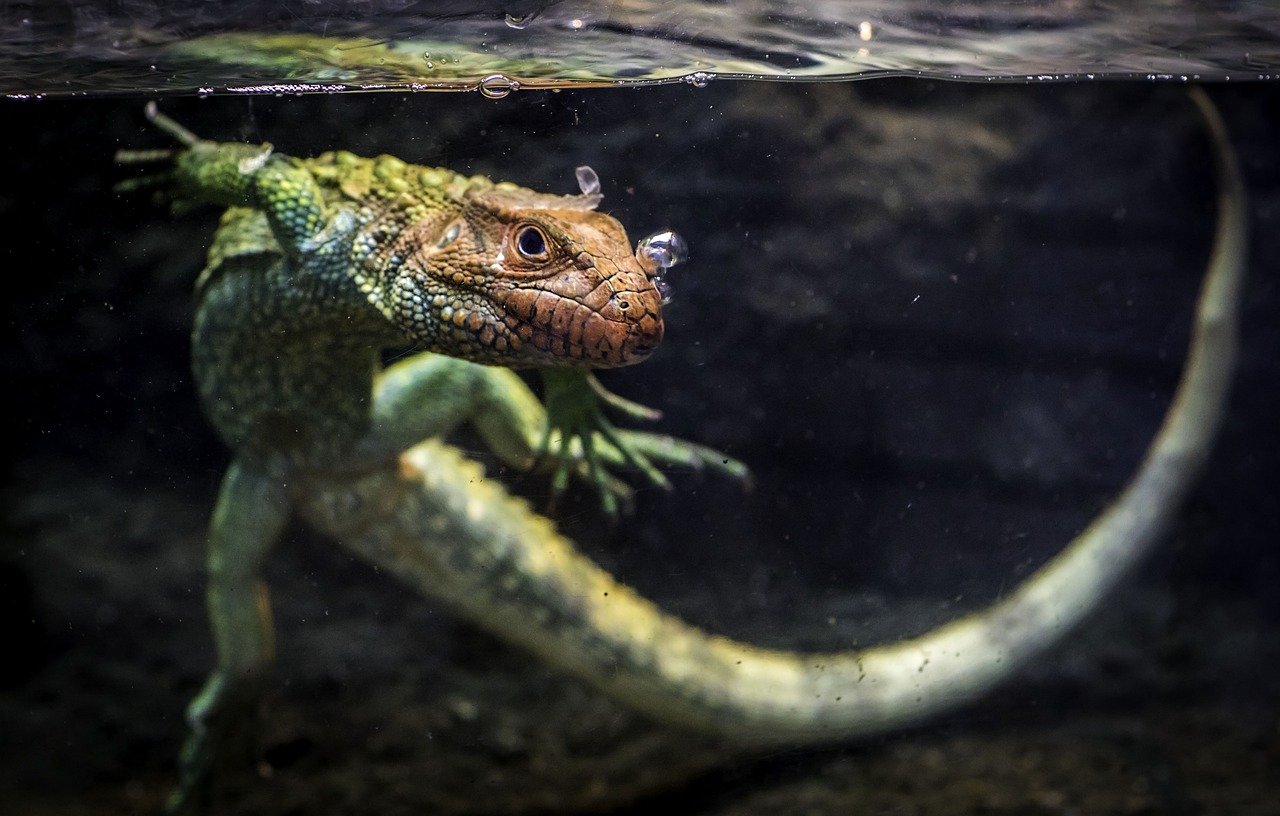
Implementing a Foster Care Program
Establishing a foster care program is a game-changer when it comes to enhancing the lives of pets waiting for adoption. Imagine a scenario where homeless animals find temporary homes filled with love and care instead of being confined to a shelter. This not only helps the animals but also eases the burden on shelters, allowing them to accommodate more pets in need. By implementing a foster care program, you create a bridge between the shelter and potential adopters, giving animals a chance to shine in a home environment.
One of the most significant benefits of a foster care program is the opportunity it provides for animals to socialize and adapt to a family setting. Animals in foster care often receive more individualized attention, which can help them develop critical social skills and reduce anxiety. This is particularly important for pets that may have experienced trauma or neglect. When they are cared for in a nurturing environment, they are more likely to exhibit positive behaviors when meeting potential adopters, making them more appealing candidates for adoption.
To kickstart your foster care program, it's essential to identify and recruit dedicated foster volunteers. These individuals can be the heart of your program, providing the love and care that animals need. Consider organizing informational sessions to attract potential foster families. During these sessions, you can explain the benefits of fostering, share success stories, and address any concerns they might have. It's also crucial to provide comprehensive training for foster volunteers, covering topics such as animal care, behavioral issues, and how to prepare animals for adoption.
When setting up the program, think about creating a foster care application that assesses the suitability of potential foster homes. This application can include questions about the applicant's experience with pets, their living situation, and how they plan to care for the animal. Ensuring that the foster home is a good match for the pet is vital for the success of the program. Once approved, foster families should receive ongoing support from your organization, including access to veterinary care, food supplies, and behavioral resources.
| Foster Care Program Components | Description |
|---|---|
| Recruitment | Identify and attract dedicated volunteers who are passionate about animal welfare. |
| Training | Provide comprehensive training on animal care and behavioral management. |
| Support | Offer ongoing support, including access to veterinary care and supplies. |
| Monitoring | Regularly check in with foster families to ensure the well-being of the animals. |
Additionally, fostering can be a wonderful way for families to experience the joys of pet ownership without the long-term commitment. It allows them to test the waters and see if they are ready to adopt a pet permanently. For many, fostering can lead to adopting the very animal they cared for, creating a beautiful story of love and connection.
In conclusion, a foster care program is not just a temporary solution; it's a vital component of a successful pet adoption strategy. By providing animals with loving foster homes, you enhance their chances of finding forever homes while simultaneously enriching the community. So, why not take that step? Start planning your foster care program today and watch as it transforms lives, both for the pets and the families who will eventually adopt them.
Q: What types of animals can be placed in foster care?
A: Most foster care programs accept dogs, cats, and sometimes other small animals like rabbits or guinea pigs. Each program may have specific guidelines regarding the types of pets they foster.
Q: Do foster families receive any support?
A: Yes! Foster families typically receive support in the form of food, veterinary care, and training. Organizations often provide resources to ensure a smooth fostering experience.
Q: How long do animals stay in foster care?
A: The duration can vary widely depending on the pet's needs and the availability of adopters. Some pets may only need a few weeks, while others may stay for several months.
Q: Can fostering lead to adoption?
A: Absolutely! Many foster families end up adopting the pets they care for, and fostering can be a wonderful way to find a perfect match.

Monitoring and Evaluating Adoption Outcomes
Monitoring and evaluating adoption outcomes is an essential aspect of any pet adoption program. It’s not just about finding homes for animals; it’s about ensuring that these homes are truly suitable and that both pets and their new families thrive together. Think of it like a relationship check-in; just as you would want to know how your friends are doing, it’s vital to keep tabs on the furry friends you've placed in homes. After all, a successful adoption is not merely measured by the number of pets rehomed, but by the long-term happiness and well-being of both the pets and their owners.
To effectively monitor outcomes, organizations should implement a structured approach that includes regular follow-ups with adopters. This could be done through phone calls, emails, or even home visits, depending on the resources available. During these check-ins, it's important to ask questions that gauge the pet’s adjustment to the new environment, the owner’s satisfaction with the adoption process, and any challenges they might be facing. Here’s a simple table that outlines some key metrics to track:
| Metric | Description | Frequency of Evaluation |
|---|---|---|
| Pet Adjustment | Assess how well the pet is adapting to its new home. | 1 month, 3 months, 6 months |
| Owner Satisfaction | Gather feedback on the adoption process and pet behavior. | 1 month, 6 months |
| Return Rate | Track how many pets are returned to the program. | Monthly |
| Behavioral Issues | Monitor any reported behavioral problems with the pet. | 1 month, 3 months |
In addition to direct follow-ups, organizations can also utilize surveys to gather data from adopters. These surveys can be designed to capture a wide range of feedback, from the adoption experience to the pet’s behavior at home. By analyzing this data, organizations can identify trends and areas needing improvement. For example, if multiple adopters report similar behavioral issues, it may indicate a need for enhanced training or support resources.
Moreover, it is crucial to create a feedback loop where the insights gathered are used to inform and improve the adoption process. If an aspect of the program is consistently receiving negative feedback, adjustments should be made to address these concerns. This not only improves the experience for future adopters but also strengthens the program's reputation in the community.
Ultimately, the goal of monitoring and evaluating adoption outcomes is to create a sustainable model that benefits both pets and their owners. By investing time and resources into this aspect of the program, organizations can ensure that they are not just placing animals in homes, but fostering lasting relationships that enrich the lives of all involved. Remember, every successful adoption story starts with a solid foundation of support and understanding. So, let’s keep the conversation going and continue to build a community that prioritizes the well-being of our beloved pets!
- What should I do if I experience challenges with my adopted pet? It's important to reach out for support. Many organizations offer resources, including training and behavioral advice.
- How often should I expect follow-ups after adoption? Follow-ups typically occur at 1 month, 3 months, and 6 months post-adoption, but this can vary by organization.
- What happens if I can no longer keep my adopted pet? If circumstances change, it's best to contact the adoption organization to discuss options, including rehoming.
- Can I adopt more than one pet? Yes, many adopters choose to adopt multiple pets, but it’s essential to ensure that you can provide the necessary care for each one.

Engaging the Community through Events
When it comes to creating a successful pet adoption program, one of the most powerful tools at your disposal is community engagement. By hosting events, you not only raise awareness about the importance of animal adoption but also create a vibrant atmosphere where people can come together for a common cause. Imagine this: a sunny Saturday afternoon filled with laughter, wagging tails, and the sound of children playing. That’s the magic of community events! They bring people closer while showcasing the adorable pets that are waiting for their forever homes.
Organizing events can take many forms. You might consider hosting adoption fairs where potential pet owners can meet animals up close. These events allow attendees to interact with pets, ask questions, and get a feel for what it’s like to welcome a furry friend into their lives. Moreover, educational workshops can be held to inform the community about responsible pet ownership, training techniques, and the joys and challenges of having pets. This kind of knowledge empowers future pet owners, helping them make informed decisions.
Another effective way to engage the community is through fundraising activities. Not only do these events generate crucial funds for your program, but they also foster a sense of community spirit. Think bake sales, fun runs, or even pet costume contests! Each event can be an opportunity to spread the word about your adoption program, share success stories, and highlight the impact of pet adoption on the community. It’s about creating a buzz and getting people excited about the animals in need of homes.
To make your events even more successful, consider collaborating with local businesses and organizations. This could mean partnering with pet supply stores for sponsorships or teaming up with veterinary clinics to provide on-site consultations for potential adopters. By pooling resources, you can create a more comprehensive experience for attendees, making it a win-win situation for everyone involved.
Here’s a quick rundown of some engaging event ideas:
- Adoption Fairs: Showcase adoptable pets in a lively setting.
- Workshops: Educate the community on pet care and training.
- Fundraisers: Host fun events that raise money and awareness.
- Pet Meet-ups: Create informal gatherings for pet owners to socialize.
Engaging the community through events is not just about finding homes for pets; it’s about building a network of support and fostering a culture of compassion towards animals. When people come together for a shared purpose, they form connections that can last a lifetime. So, roll up your sleeves, gather your team, and start planning some unforgettable events that will not only promote pet adoption but also strengthen the bonds within your community!
Q: How can I get involved in local pet adoption events?
A: You can volunteer your time, donate supplies, or simply attend and spread the word about the events through your social media channels!
Q: What types of pets are usually available for adoption?
A: Adoption events often feature a variety of pets, including dogs, cats, and sometimes even rabbits and other small animals.
Q: Is there a fee for adopting a pet?
A: Most adoption programs require a fee, which typically covers vaccinations, spaying/neutering, and other essential care. This fee helps support the program and the animals in need.
Q: What should I bring to an adoption event?
A: It’s a good idea to bring a valid ID, any necessary paperwork, and, if you have other pets at home, information about them. This will help the adoption staff assess your suitability as a pet owner.
Q: Can I adopt a pet if I live in an apartment?
A: Yes, many pets are well-suited for apartment living! Just make sure to choose a pet that fits your living situation and lifestyle.

Celebrating Success Stories
When it comes to pet adoption, there's nothing quite as heartwarming as witnessing the joy of a pet finding their forever home. Celebrating success stories is essential not only for the morale of the adoption program but also for inspiring others in the community to consider adopting a pet. Each adoption represents a unique journey filled with challenges, triumphs, and the unconditional love that pets bring into our lives. By sharing these stories, we can create a ripple effect that encourages more families to open their hearts and homes to animals in need.
Success stories can take many forms, from the shy puppy who blossomed into a playful companion to the senior cat who finally found a cozy lap to curl up in. These narratives highlight the positive impact that adopting a pet can have on both the animal and the adopter. For instance, consider the story of Max, a once-timid terrier mix who spent months in a shelter. His adoption story began when a loving family visited the shelter during an adoption event. They were captivated by Max's gentle spirit and decided to give him a chance. Today, Max is not just a pet; he's a cherished family member who brings joy and laughter into their home.
To effectively share these success stories, consider utilizing various platforms such as social media, newsletters, and community bulletin boards. A well-structured success story template can help maintain consistency and make it easier for readers to connect with each narrative. Here’s a simple template you can use:
| Success Story | Details |
|---|---|
| Pet Name | [Insert Pet Name] |
| Adoption Date | [Insert Adoption Date] |
| Previous Background | [Insert Background Information] |
| New Home | [Insert New Family Information] |
| Current Status | [Insert Current Status and Activities] |
In addition to sharing individual stories, consider hosting events where adopters can come together to celebrate their pets. These gatherings can foster a sense of community and allow pet owners to share their experiences, tips, and advice. Imagine a sunny afternoon filled with laughter, wagging tails, and the purring of content felines, all in the name of celebrating the bond between pets and their humans!
Moreover, featuring success stories prominently on your website or social media can significantly enhance the visibility of your adoption program. A dedicated section for these stories, complete with photos and quotes from the adopters, can serve as a powerful testament to the joy that comes from adopting a pet. This not only promotes the program but also builds trust and encourages potential adopters to take the leap into pet parenthood.
Ultimately, celebrating success stories is about more than just sharing happy endings; it's about creating a culture of empathy and compassion within the community. Each story serves as a reminder that love knows no bounds and that every animal deserves a chance at happiness. As these stories circulate, they can inspire others to become advocates for pet adoption, reinforcing the message that adopting a pet is one of the most rewarding decisions one can make.
- How can I share my pet adoption success story? You can share your story through social media, your local shelter's website, or community events. Many shelters have dedicated sections for success stories.
- Why are success stories important for pet adoption programs? They inspire others to adopt by showcasing the positive impact of pet adoption and create a sense of community among pet owners.
- What should I include in my success story? Include details about your pet's background, your adoption experience, and how your life has changed since bringing your pet home.
Frequently Asked Questions
- What is a pet adoption program?
A pet adoption program is a structured initiative designed to find loving homes for animals in need. It involves various strategies to promote responsible pet ownership, reduce the number of homeless animals, and ensure that both pets and adopters have a positive experience.
- Why is pet adoption important?
Pet adoption is crucial for several reasons. It helps reduce the number of stray and abandoned animals, promotes animal welfare, and encourages responsible pet ownership. When you adopt, you're not just giving an animal a home; you're also making a difference in your community by supporting local shelters and rescues.
- How can I get involved in a pet adoption program?
You can get involved in a pet adoption program by volunteering at local shelters, fostering animals, or even helping with marketing efforts to raise awareness. Additionally, you can attend community events and support fundraising activities to promote the cause.
- What should I consider before adopting a pet?
Before adopting a pet, consider your lifestyle, living situation, and the time and resources you can dedicate to a new furry friend. Think about the type of pet that would best fit your home and family dynamics, and ensure you're ready for the responsibilities that come with pet ownership.
- What is the adoption process like?
The adoption process typically involves filling out an application, meeting the pet, and possibly an interview with shelter staff. They want to ensure that you're a good fit for the animal and that you understand the responsibilities of pet ownership. It’s designed to be thorough yet efficient to help match you with the right pet.
- What support do adopters receive after adopting a pet?
Many adoption programs provide post-adoption support, including training resources, behavioral guidance, and access to veterinary care. This support helps new pet owners navigate the initial challenges of pet ownership and ensures a smoother transition for both the pet and the owner.
- How does a foster care program work?
A foster care program allows animals to live in temporary homes while they await adoption. Foster families provide love and care, helping to socialize the pets and prepare them for their forever homes. It’s a win-win situation, as it benefits the animals and supports the overall adoption program.
- What types of community events can I participate in?
You can participate in various community events such as adoption fairs, educational workshops, and fundraising activities. These events not only help raise awareness about pet adoption but also foster a sense of community involvement and support for local animal welfare initiatives.
- How can success stories impact the adoption program?
Sharing success stories of adopted pets and their new families creates a positive narrative around the adoption program. It inspires others to consider adoption and highlights the meaningful impact the initiative has on both animals and the community, encouraging more people to get involved.











